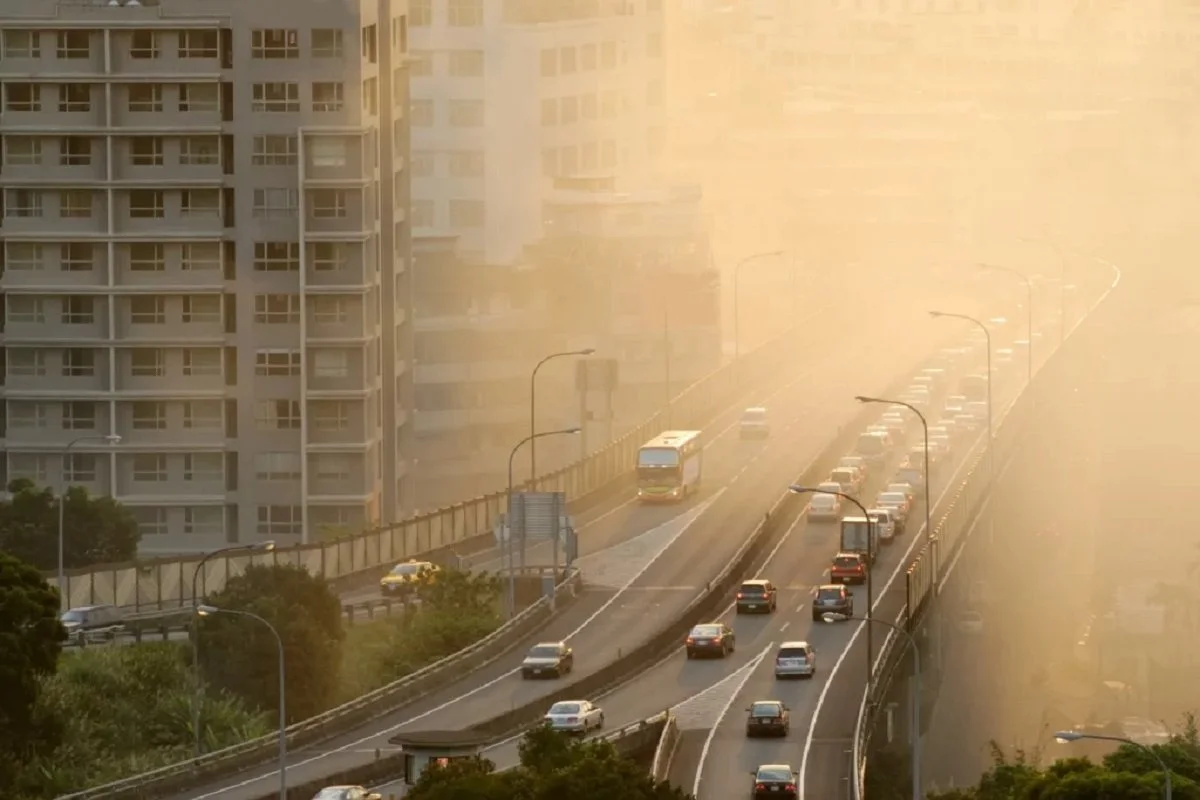
Heavy smog on a cold morning as air pollution levels rise in New Delhi on Tuesday.
Two days after Diwali, the nation’s capital was still ensnared in an oppressive haze on Tuesday due to a combination of low temperatures, cloudy skies, and calm winds that kept the residue of Sunday’s unrestrained firecracker burning trapped in the air. This caused the air quality index (AQI) to hover just outside the deep red “severe” zone.
The Delhi air quality index (AQI) for the 24 hours ended at 397 at 4 p.m. on Tuesday. This is slightly below the severe zone (which begins at 401) and considerably worse than the 358 recorded on Monday, which was far worse than the 218 recorded on Diwali evening (Sunday).
In spite of this, the city was devoid of pollution data for a large portion of Tuesday; information from the 24 air monitoring stations operated by the Delhi Pollution Control Committee (DPCC) was not accessible until 4 p.m. Because of this, the average air quality index (AQI) for Delhi on the Central Pollution Control Board’s (CPCB) Sameer app was consistently far lower than accurate throughout the day. After the monitors stayed dark for eight hours, DPCC said that there was a “server error” but did not provide any other information.
Indeed, the monitors were operational again by 3 p.m., and the CPCB said that data from all of Delhi’s operational pollution stations was included in its official AQI bulletin.
Also Read : (Express Editorial) CWC23: Team India journeying from agony to glory
Insolently burning firecrackers on Diwali night in defiance of the Supreme Court’s orders caused the city’s air pollution to reach toxic levels, surpassing even favorable meteorological conditions, and now the city faces a catastrophe of its own creating. As a result, the city lost one of its best opportunities to celebrate Diwali in recent memory, and its citizens had to deal with some of the highest pollution levels in years. The Delhi Police kept a close eye on everything, but they did little to punish those who broke the law.
At 4 p.m. on Sunday, Delhi’s PM2.5 concentration was 45.6 µg/m³, which is less than India’s recommended level of 60 µg/m³. At midnight, smoke from firecrackers caused this number to rise to 550.8µg/m³, which is over ten times higher than the safe limit.
At 12 am on Tuesday, the PM2.5 concentration in Delhi reached its peak of 342µg/m³.
Meteorological experts said that Delhi’s pollution levels are unlikely to decrease due to the northwest winds that are still flowing in and the smoke from burning paddy fields in Punjab and Haryana. This is especially true given the calm winds and dropping temperatures.
Tuesday saw 1,776 farm fires reported by Punjabi officials, up from 1,624 on Monday. This is the agrarian state that records the most farm fires before the winter cropping season—28,117—more than any other state. In Punjab, between September 15 and November 30, of last year, 49,922 fires were reported.
Also Read : Extremely contagious Covid-19 variant HV.1 spreading in US
The following three days in the city will have low temperatures and calm winds early in the morning, according to experts from the India Meteorological Department (IMD). It stated that Delhi should continue to have average wind speeds of 6 to 8 km/hr for the next three days between midday and 5 p.m., which won’t be sufficient to disperse and scatter pollutants.
According to Anumita Roychowdhury, executive director of research and advocacy at the Centre for Science and Environment (CSE), a variety of local and transboundary sources, including cars, firecrackers, burning biomass, and other sources, contributed to the pollution in Delhi’s air on Tuesday.
She emphasized that Delhi won’t see a significant improvement in the quality of the air until strong winds clean the air. “We are seeing only winds picking up during the day for a few hours and while some pollutants may disperse during that period, our background emissions are so high that more pollutants are constantly being added and the end result is no significant change in air quality,” she said.
Scientist Kuldeep Srivastava of IMD agreed.
Also Read : Sahara Shri Subrat Roy Sahara no more
“After midday, the winds kicked up for a short while, but by the evening, they had returned to their calm. Similar weather is predicted for both Wednesday and Thursday. The wind direction will remain northwesterly on Wednesday, but by Thursday, it should become easterly, according to Srivastava. That is the sole change.
The city’s cause was not aided by the falling temperatures.
On Tuesday, Delhi saw a maximum temperature of 25.9°C, three degrees below normal, and a lowest temperature of 12°C, two degrees below normal. According to the Met Department’s projection, the minimum temperature in the city is expected to dip to 11°C by Wednesday, while the maximum temperature is expected to stay at 26°C.
To read more such news, download Bharat Express news apps


















